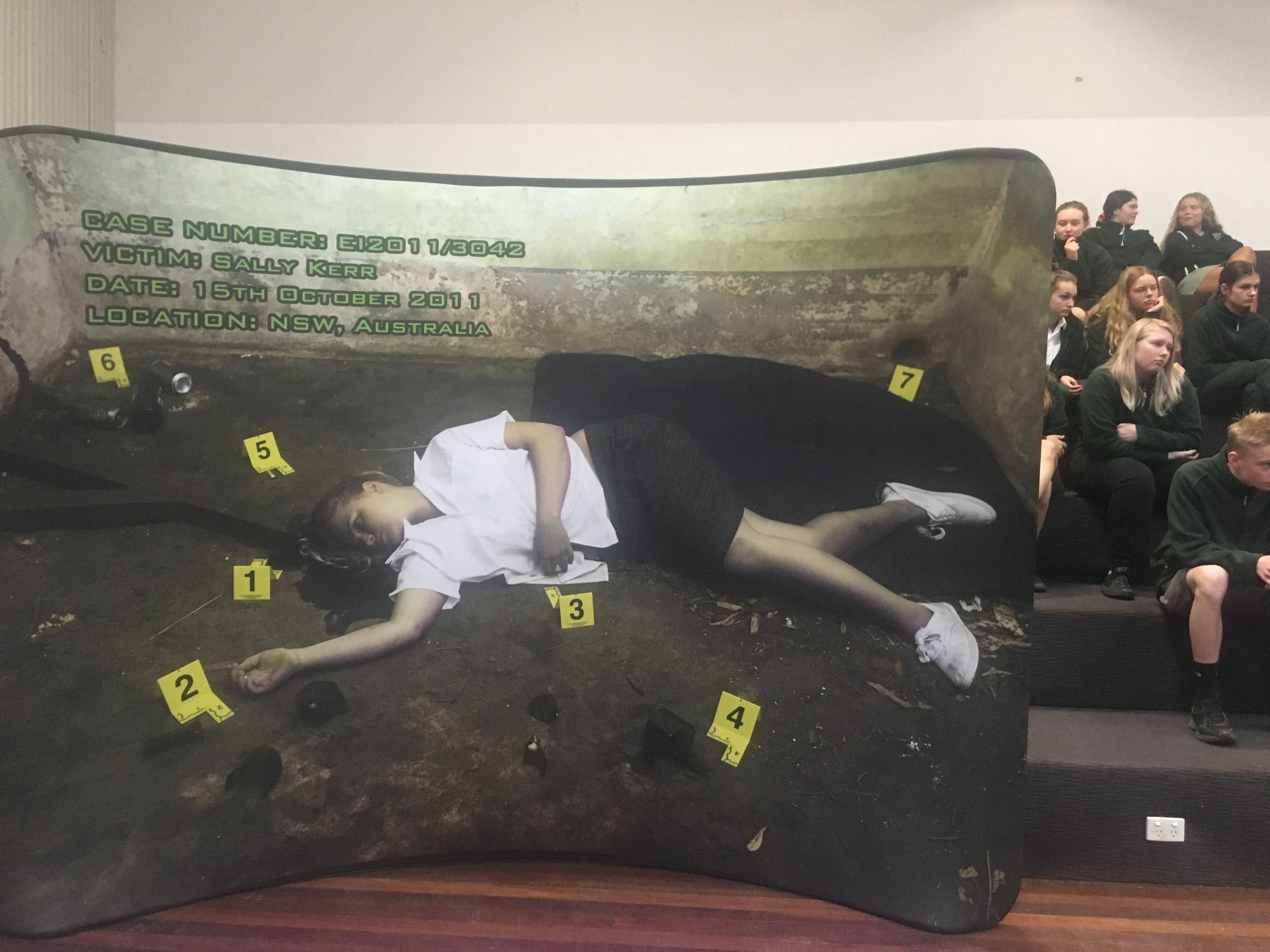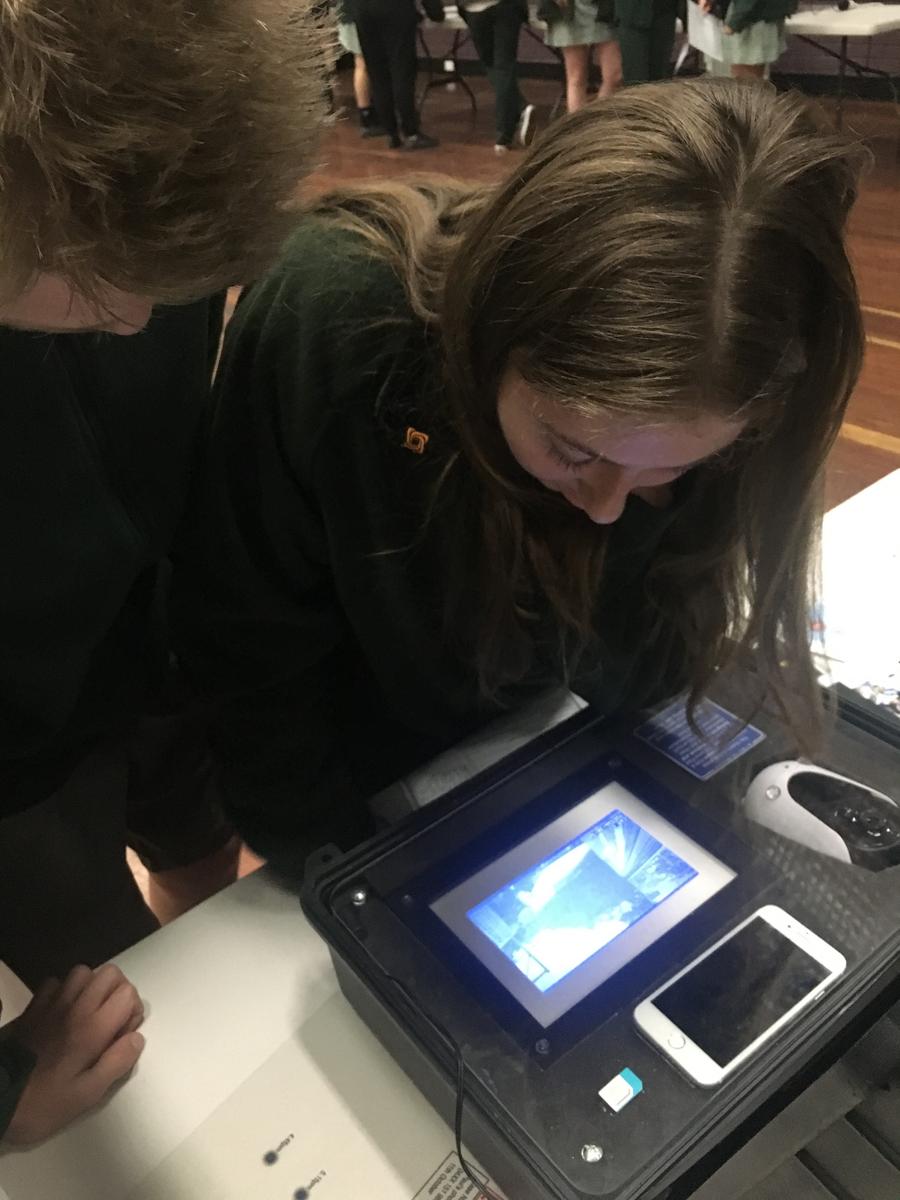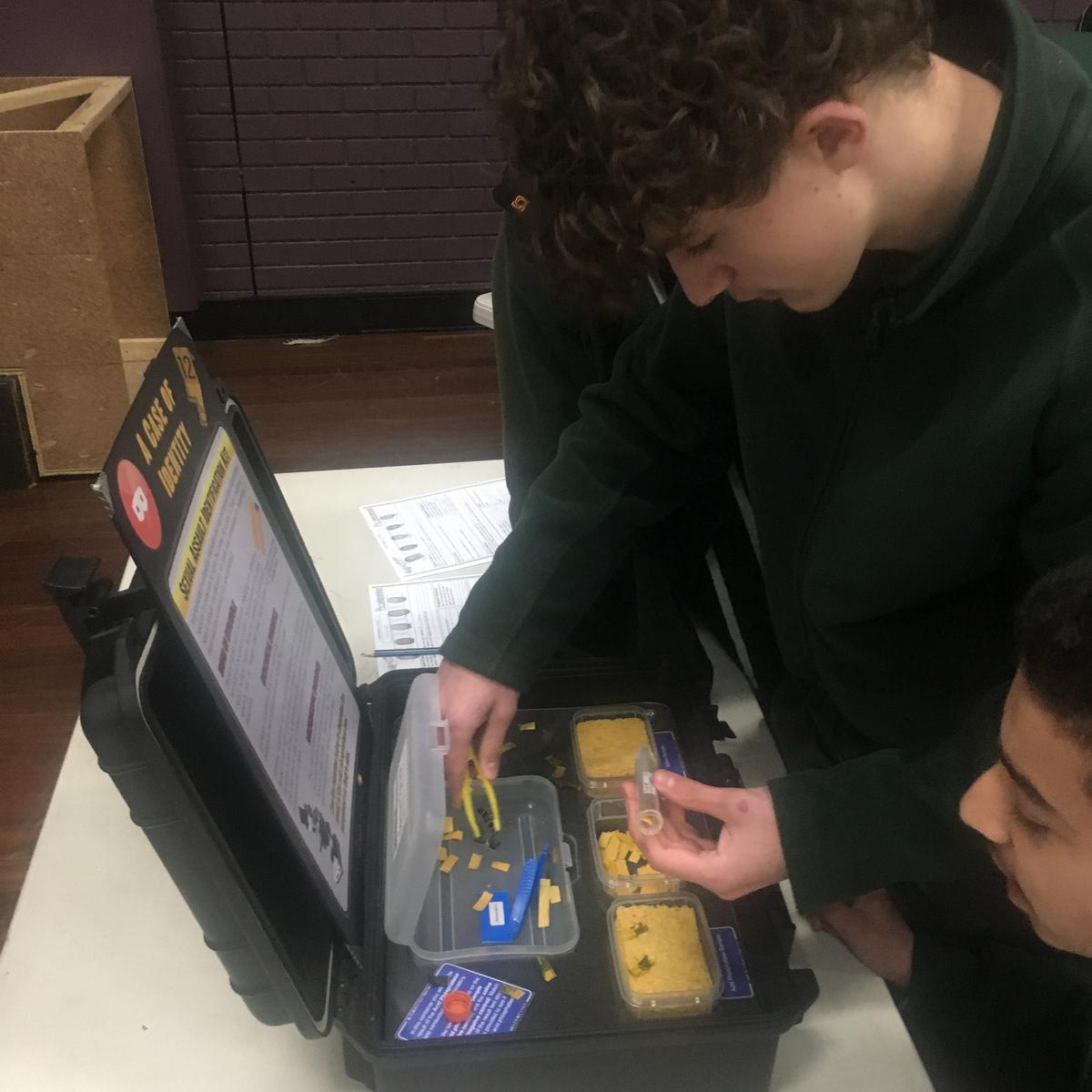Science 'DNA all the way"

DNA all the way
Did you know that:
- The study of skin markings or patterns on fingers, hands and feet, used for fingerprinting or footprinting, is called dermatoglyphics.
- Luminol is used at crime scenes to detect small amounts of blood. It reacts with iron in the haemoglobin and emits a blue light.
- DNA profiling was used to identify the bodies of the Russian royal family who were murdered during the Russian Revolution in 1917.
- DNA from a person’s body, from their skin, blood or saliva, is always the same.
- Soil samples from clothes can be matched to crime scenes by profiling the DNA of microbes in the soil.
- Bare footprints are unique to an individual in the same way that fingerprints are.
- DNA is often found on half-eaten snacks or drink cans left behind at house burglaries.
Students in the DNA classes have a fair idea!
Mrs Nicholson’s and Ms Utber’s classes attended an incursion called “A Case of Identity”, held in the Theatrette. A crime scene was investigated using all of the forensic science techniques involved in finding the criminal. The scene was set with a narrated account of the true story of a young girl that went missing in 2011, to be found 4 days later in a bunker at a beach in NSW. She had been the victim of a murder.
Several forensic technique stations were set up around the Theatrette and teams of students investigated each. They looked at footprint patterns and casts of shoe types, fibre samples, fingerprint patterns, blood analysis, physical evidence on bottles and cans and the use of maggots to determine the time of death.
The session was finished with a talk about the career pathways into this field of science.
So, get your head out of those crime novels and CSI TV series and become part of true stories.
There are all sorts of career opportunities in forensics, including:
- chemical, food and pharmaceutical industries
- DNA-based forensic science
- drug and chemical detection
- education
- entomology
- government organisations
- human anatomy
- insurance
- investigation
- risk analysis
- research science
- toxicology



